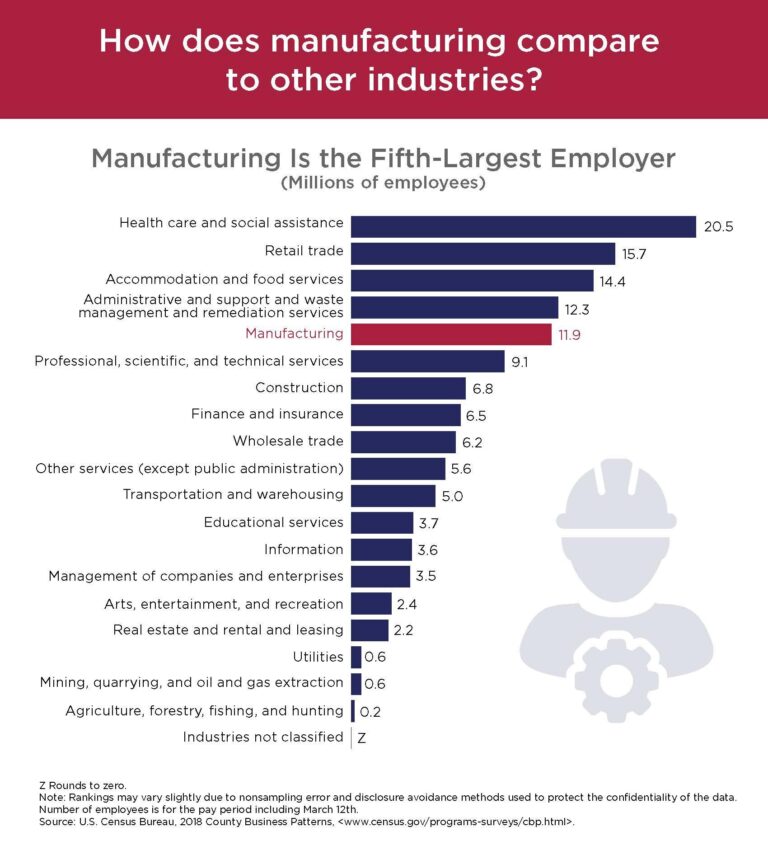Transforming U.S. Manufacturing: Navigating Innovation, Workforce, Supply Chains, and Sustainability
Technological Advancements Fueling U.S. Manufacturing Competitiveness
The American manufacturing industry is undergoing a profound transformation driven by cutting-edge technologies that enhance both efficiency and product excellence. Incorporating robotics, artificial intelligence, and the Internet of Things (IoT) into production processes is revolutionizing how factories operate, enabling faster innovation cycles and cost reductions. This shift extends beyond mere equipment upgrades; it involves reimagining operational workflows and leveraging real-time data for predictive maintenance and smarter decision-making.
In addition to technological progress, manufacturers are embracing innovative business frameworks and sustainability principles to meet evolving consumer demands and regulatory standards. The adoption of circular economy models and digitally enabled customization are becoming central to maintaining a competitive advantage. Key elements shaping this innovation landscape include:
- Smart Manufacturing Systems: Adaptive production lines with enhanced monitoring capabilities
- Workforce Development: Comprehensive training programs emphasizing hybrid technical skills
- Green Manufacturing Practices: Emphasis on material recycling and energy conservation
- Integrated Digital Platforms: Ecosystems connecting suppliers, manufacturers, and customers seamlessly
| Innovation Focus | Effect on Operations | Illustrative Example |
|---|---|---|
| AI-Driven Automation | Reduces production cycle times by approximately 30% | Automated defect detection systems |
| IoT Device Integration | Decreases equipment downtime by up to 40% | Continuous machine health monitoring |
| Employee Reskilling Initiatives | Boosts workforce productivity by 25% | Certification programs for multi-skilled technicians |
| Sustainability Programs | Achieves 15% savings in material costs | Implementation of closed-loop recycling |
Addressing Workforce Challenges: Strategies for Talent Development in Manufacturing
The U.S. manufacturing sector faces significant labor challenges, including an aging workforce and a shrinking pipeline of skilled young professionals. The decline in vocational education and the allure of technology sectors have intensified competition for talent. To overcome these obstacles, manufacturers are adopting proactive strategies that not only fill immediate gaps but also prepare for future workforce demands.
Efforts to strengthen the labor pool focus on upskilling and reskilling current employees, expanding apprenticeship programs, and forging stronger ties with educational institutions. Notable approaches include:
- Advanced Technical Education: Incorporating modern manufacturing technologies into community college curricula
- Inclusive Recruitment: Targeted outreach to underrepresented demographics to diversify the workforce
- Automation Synergy: Combining human expertise with intelligent automation to enhance productivity without extensive hiring
| Workforce Strategy | Expected Outcome | Timeframe for Implementation |
|---|---|---|
| Apprenticeship Expansion | Growth in skilled labor availability | 1 to 3 years |
| Educational Partnerships | Increased early interest in manufacturing careers | 6 months to 2 years |
| Automation Integration | Enhanced operational efficiency | Continuous |
Building Supply Chain Resilience Amid Global Uncertainties
Recent global disruptions, including health crises and geopolitical conflicts, have highlighted the fragility of supply chains worldwide. U.S. manufacturers are prioritizing resilience by adopting strategies that enhance flexibility and reduce vulnerability. These include diversifying supplier bases, increasing local sourcing, and utilizing advanced analytics for real-time supply chain visibility.
Embracing these resilience measures not only mitigates risks but also positions companies to capitalize on market shifts more effectively. Core components of this approach are:
- Supplier Diversification: Minimizing reliance on single regions or vendors to reduce disruption risks
- Digital Supply Chain Tools: Leveraging AI and data analytics for improved forecasting and responsiveness
- Inventory Management: Balancing lean inventory with strategic reserves to prevent shortages
- Collaborative Supplier Relationships: Enhancing transparency and joint problem-solving capabilities
| Resilience Tactic | Main Advantage | Implementation Challenge |
|---|---|---|
| Multiple Supplier Networks | Mitigates geographic and political risks | Increased complexity in coordination |
| Advanced Data Analytics | Better demand forecasting and risk management | Requires significant IT investment |
| Strategic Stockpiling | Provides buffer against supply delays | Higher inventory holding costs |
| Supplier Collaboration Platforms | Improves transparency and communication | Aligning goals across partners |
Driving Sustainability: Transforming Manufacturing Practices and Investment Priorities
Environmental sustainability has become a central focus for U.S. manufacturers, prompting a shift toward greener operations and investment in eco-conscious technologies. Companies are increasingly adopting circular economy principles to reduce waste and extend product lifespans, while also prioritizing renewable energy and sustainable sourcing.
Investment trends in 2024 reflect this shift, with significant capital flowing into initiatives that promote environmental stewardship and regulatory compliance. Key sustainability efforts include:
- Renewable Energy Adoption: Utilizing solar, wind, and other clean energy sources to lower emissions and operational expenses
- Supply Chain Transparency: Implementing rigorous ESG (Environmental, Social, and Governance) standards and audits
- Innovative Materials Research: Developing biodegradable and less polluting materials for manufacturing
| Sustainability Initiative | Operational Impact | Investment Growth in 2024 |
|---|---|---|
| Renewable Energy Integration | Lower carbon emissions and reduced energy costs | +35% |
| Supply Chain ESG Audits | Improved compliance and risk management | +25% |
| Eco-Friendly Material Development | Decreased waste and environmental footprint | +30% |
Conclusion: Embracing Change to Secure the Future of U.S. Manufacturing
The American manufacturing sector stands at a critical juncture, shaped by rapid technological innovation, workforce evolution, supply chain realignment, and sustainability imperatives. To thrive in this dynamic environment, manufacturers and policymakers must remain vigilant and adaptable, continuously integrating new technologies, fostering talent, strengthening supply networks, and committing to sustainable practices. The ability to anticipate and respond to these multifaceted trends will determine the resilience and success of U.S. manufacturing in the years ahead.







